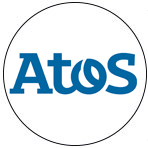
Atos is strongly convinced about the importance of diversity as a key value driver for the group’s future continuous growth and competitiveness, and has launched the ‘Atos Group Diversity Program’, with group executive sponsors, a group diversity programme manager and a group diversity committee.
The business case
The development of diversity within the group is seen as a way to improve operational performance, meet our stakeholders’ increasing expectations in this domain, continue bringing excellence in people management and enlarge our talent pool, both in-house and via external recruitments. Our ambition is to capitalise on the differences of our employees with respect to gender, culture, generation and disability, and provide an inclusive culture to recognise, develop and value those differences.
We see specific strategic benefits as being the identification of new talent pools, increased people motivation, and strong intimacy with our stakeholders, all of which contribute to increased operational performance and an impact on the bottom line.
When creating our agenda, we performed four main exercises. The first was business analysis – an evaluation of the impact of diversity-related initiatives on performance, stakeholders’ expectations, compliance with laws, and marketing and reputation, in order to get the ‘market business case’. Secondly, we conducted a ‘market watch’, which was a worldwide analysis of diversity-related initiatives. We calculated diversity indexes and performance indexes, which fed into the diversity business case, and finally we developed ‘Atos Assessment’, which is a self-assessment tool to map the diversity-related initiatives run at local level across the group.
Top-level buy-in
We think that role models and sponsors have a key part to play in driving the programme forward. We have four executive sponsors, all members of the group executive committee, who represent the business units as well as the group functions. Getting these executive sponsors supporting the programme ensures the top-down role model approach. We have also identified role models and requested them to give testimonials, which are available to the employees worldwide. At first, testimonials were mainly focused on gender diversity but we are now developing new actions in the age, disability and cultural domains. In addition, the group is now developing a new mentoring programme.
The Atos legal, compliance and contract management department is a key player in the group diversity stategy. For example, in my capacity as former group general counsel, I was the first executive sponsor of the programme. Now I supervise the legal and compliance function, and so currently the group deputy general counsel manages the programme. Several members of the department are members of the diversity committee, and are very active contributors to the global strategy.
Impact, not box-ticking
The aim of the programme has never been to be a ‘box-ticking’ exercise. We have built up a diversity committee that has the participation of both global and GBU representatives with clear responsibilities. The committee meets every three weeks and is where we take decisions and monitor action items. In addition to having sponsorship from the highest management level, we are transparently open to each and any employee, not only for awareness purposes, but also to get their feedback and contributions. For instance, we communicate with them through a community in the Atos enterprise social network, which is open to all Atos employees.
The Group Diversity Program is closely monitored through the ‘WellBeing@Work (WbW) Program’, which underpins the Atos ambition to be recognised as one of the best companies to work for. Each year, a roadmap is defined for diversity and inclusion, and the progress and achievement of objectives are duly monitored in its monthly sessions.
